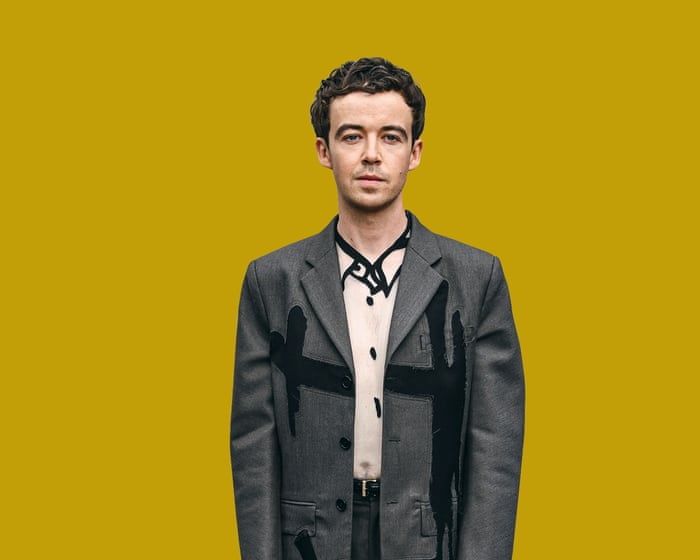Portugal’s Prime Minister, Luís Montenegro, has pledged a swift and thorough investigation into the funicular railway crash in Lisbon that killed 16 people and injured 21 others. He called the accident “one of the biggest tragedies in our recent history.”
Public prosecutors are already examining the crash, which occurred on Lisbon’s famous Glória funicular just after 6 p.m. on Wednesday. The city’s mayor has also asked Carris, the municipal transport company that operates the line, to conduct its own investigation.
According to Margarida Castro Martins, head of Lisbon’s civil protection agency, all those killed when one of the two cars derailed and crashed into a building were adults. She confirmed that the injured included Portuguese citizens as well as two Germans, two Spaniards, and one person each from Canada, Cape Verde, France, Italy, Morocco, South Korea, and Switzerland. Families of the victims will be notified before any names or nationalities are made public.
Carris later announced that one of its employees, a brake operator, was among those who died.
The injured, five of whom are in serious condition, are being treated at hospitals across the Lisbon region. One person who was critically injured died overnight, raising the death toll from 15 to 16. Earlier reports had suggested 17 fatalities, but the number was corrected on Thursday afternoon.
Pathologists from the national forensics institute worked through the night to complete postmortem examinations. In response to the derailment, Portuguese authorities suspended all of Lisbon’s other funiculars for safety inspections.
Speaking on Thursday afternoon, Prime Minister Montenegro described the crash as a “tragic accident that transcends borders and a pain that knows no nationality.” He promised a quick investigation to determine what went wrong, stating, “The competent authorities will swiftly carry out the necessary investigations to determine the cause of this tragic accident. We will determine all responsibilities with a sense of respect for all those who suffered and are suffering the effects of this accident.”
The Glória funicular, known as Elevador da Glória, consists of two cars that move up and down a steep hill in central Lisbon, counterbalancing each other. Manuel Leal, leader of the Fectrans union, told local TV that workers had previously raised concerns about cable tension making braking difficult, though it is too early to say if that was the cause.
Footage from the scene showed the yellow-and-white car lying on its side in the narrow street, its structure crumpled after crashing into a building on a bend. Witnesses reported the car careening downhill out of control. Teresa d’Avó told SIC TV, “It hit the building with brutal force and fell apart like a cardboard box.”
Another witness, Bruno Pereira, told CNN Portugal that the car at the bottom of the hill suddenly jerked off the track onto the pavement just before the other car came hurtling down “and struck the walls like a rock.” He described panic as people ran from the scene.Yes, there were people there. Some tried to pull others out from under the tram. Cobblestones were scattered everywhere, and the metal tracks the tram runs on had been forced out of place.
Lisbon’s mayor, Carlos Moedas, said there were no words to describe the city’s pain. “We’re gathering all the information to determine who is responsible. The city needs answers,” he said.
As Portugal began a day of national mourning on Thursday, President Marcelo Rebelo de Sousa expressed hope that authorities would soon determine the cause of the crash.
The Glória line, which carries about 3 million people each year, is one of the funicular lines run by Carris and is used by both tourists and residents. Its two cars, each holding around 40 people, are connected to opposite ends of a cable and pulled by electric motors.
Carris stated that all maintenance protocols had been followed, including monthly, weekly, and daily inspections. The company also paid tribute to the worker who died, André Marques, describing him as a dedicated, kind, and cheerful professional.
Pedro Sánchez, the prime minister of neighboring Spain, said he was saddened by the “terrible accident.” “We send all our love and solidarity to the families of the victims and to the Portuguese people during this difficult time,” he said. “We also hope those injured recover quickly.”
Italy’s foreign minister, Antonio Tajani, said he had met with his Portuguese counterpart and expressed solidarity with the victims.
European Commission President Ursula von der Leyen shared her sadness and offered condolences to the victims’ families.
A spokesperson for the UK’s Foreign, Commonwealth and Development Office said they were in touch with local authorities and ready to provide consular assistance if any British nationals were affected.
Portugal, especially Lisbon, has seen a tourism boom over the past decade, with visitors crowding the city center during summer months.
Reuters and the Associated Press contributed to this report.
Frequently Asked Questions
Of course Here is a list of FAQs about the Lisbon funicular crash designed to be clear and helpful for anyone seeking information
General Information The Event
Q What exactly happened with the Lisbon funicular
A A historic funicular in Lisbon Portugal derailed causing a serious accident that resulted in injuries and at least one fatality
Q When and where did the crash happen
A The crash occurred on the Ascensor da Bica line one of Lisbons famous tourist attractions on a specific date
Q What is a funicular
A A funicular is a type of cable railway on a steep incline where two counterbalanced cars are attached to opposite ends of the same cable so as one goes up the other goes down
The Aftermath Investigation
Q What has the Portuguese government said about the crash
A Portugals Prime Minister has publicly promised a quick thorough and comprehensive investigation to determine the exact cause of the accident and ensure it doesnt happen again
Q Who is conducting the investigation
A The investigation is likely being led by national transport safety authorities and accident investigation boards possibly in coordination with judicial police to look into both technical failures and any potential human error or negligence
Q What are the possible causes being investigated
A While the official cause is still under investigation common possibilities for such accidents include mechanical failure human operational error or track infrastructure issues
Q Has anything like this happened in Lisbon before
A While the citys trams and funiculars are generally very safe there have been minor incidents historically An accident of this severity is extremely rare for this iconic transport system
Impact and Practical Information
Q Are the other funiculars in Lisbon still running
A Following the crash it is highly probable that all similar funiculars were temporarily suspended for immediate safety inspections Its best to check current local transport updates




